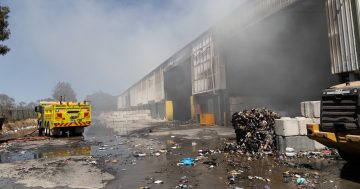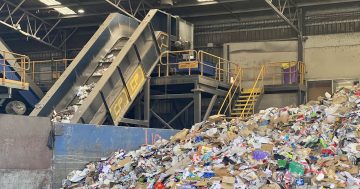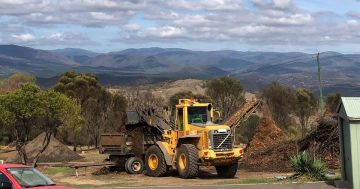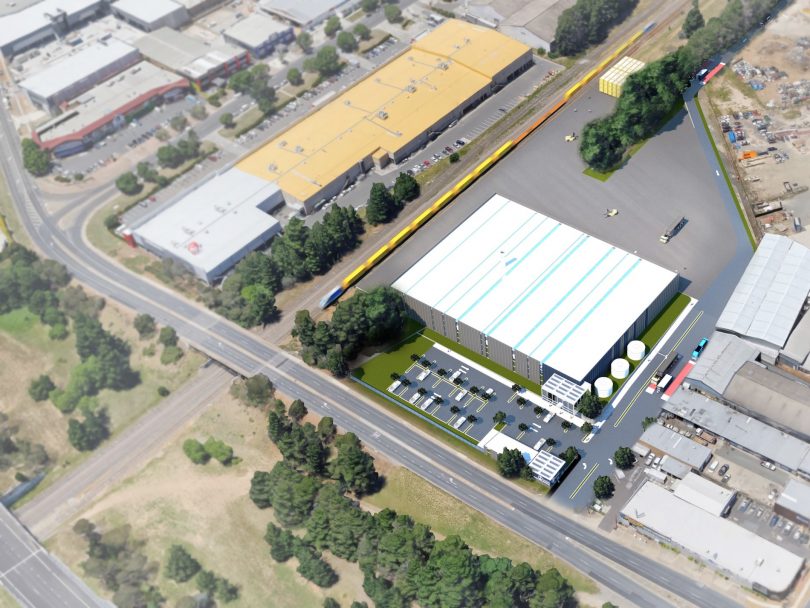
A render of Capital Recycling Solutions’ Ipswich Street site showing the rail terminal and the MRF. Images: CRS.
A development application for a recycling facility in Fyshwick is now imminent after the ACT Government finally accepted the proponent’s Environmental Impact Study.
Capital Recycling Solutions director Adam Perry welcomed the news, made public late on Friday by media release, but lambasted the Environment, Planning and Sustainable Development Directorate for taking so long to review the draft document, which was lodged two years ago.
CRS will now examine the finalised EIS and make any adjustments required but Mr Perry remains concerned that it may take years before the project is approved.
He said the planning authority seemed incapable of doing more than one thing at a time and some actions had to be repeated, such as when their independent consultants referred to NSW legislation instead of the ACT’s.
”I’m not saying things should be rubber-stamped, we need careful assessment of development assessments,” Mr Perry said. ”What I’m saying is that if you are going to get independent consultants at least give them the correct scope, don’t take months and months to turn things around.”
He said for all the talk of clearing the backlog of applications, the focus was on the smaller projects at the expense of the bigger ones such as theirs.
”They’ve got to move quicker,” he said.
He estimated the combined cost of the court case over the rail terminal, which will serve the recycling facility, and the EIS process was more than $3 million.
An unrelated proposal from Mr Perry’s Access Recycling for a metal recycling plant in Fyshwick had been stalled for a year with the planning authority.
CRS, a joint venture between Access Recycling and Sydney-based Benedict Industries, wants to build its Materials Recovery Facility on Ipswich Street, adjacent to the rail line, to process the Territory’s waste and extract recyclable materials, with existing kerbside collection trucks transporting garbage to Fyshwick.
It says it will divert 300,000 tonnes a year of waste from landfill at the Mugga Lane Resource Management Centre and recover recyclables, which it will ship by rail to Port Botany. Any remaining waste will go by rail in containers to Veolia’s Woodlawn Bioreactor at Tarago.
Mr Perry said more than 100,000 tonnes a year was going by road from Canberra to Woodlawn, via Bungendore, despite a rail line running beside the road.
”We want to see those trucks taken off the road and that freight put on to trains,” he said.
The original proposal included a waste-to-energy plant but that was dropped in the face of public concern about toxic emissions, despite the company arguing the technology was safe.
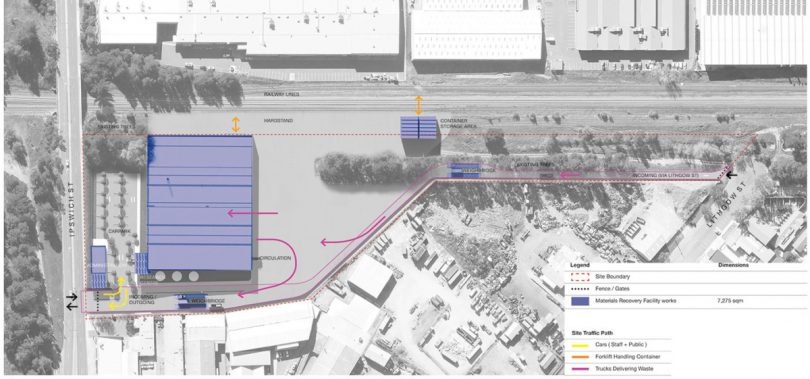
How the proposed facility will operate.
The ACT Government has since banned the burning of waste to produce electricity, which Mr Perry said was hypocritical.
”They have enshrined hypocrisy with their waste-to-energy policy,” he said.
Mr Perry said a large-scale incinerator would stay off the table but there were still thermal processes required to recycle most materials.
”The ACT Government has come out and said they’re happy to see fuel pellets made from their waste but they don’t want the waste burnt in the ACT,” he said.
Mr Perry also warned that moves to stop industrial activity in Fyshwick threatened jobs and would leave industry with nowhere to go.
”The city was carefully planned and we need to stick to those plans. The proposal is entirely consistent with the zoning of the land,” he said.
He said other options such as Hume were found to be unviable as NSW had no interest in repairing the rail line there.
He said the commercial appetite for recycling was greater in the wake of the Chinese ban on importing waste, and he was buoyed by the Federal Government’s $190 million announcement to boost local recycling.
”The world has become more responsible for the waste that it generates,” he said.
But five years after the ACT Government spent $15 million on its Waste Feasibility Study and invited proposals to manage the Territory’s waste, nothing had happened, Mr Perry said.
”We need to step up to it because there are no other approved projects,” he said.
Sydney-based construction products supplier and recycler Hi-Quality Group also has plans for a recycling facility in Fyshwick, but Mr Perry said others had looked at the ACT and decided to go elsewhere after seeing what had happened to CRS.











